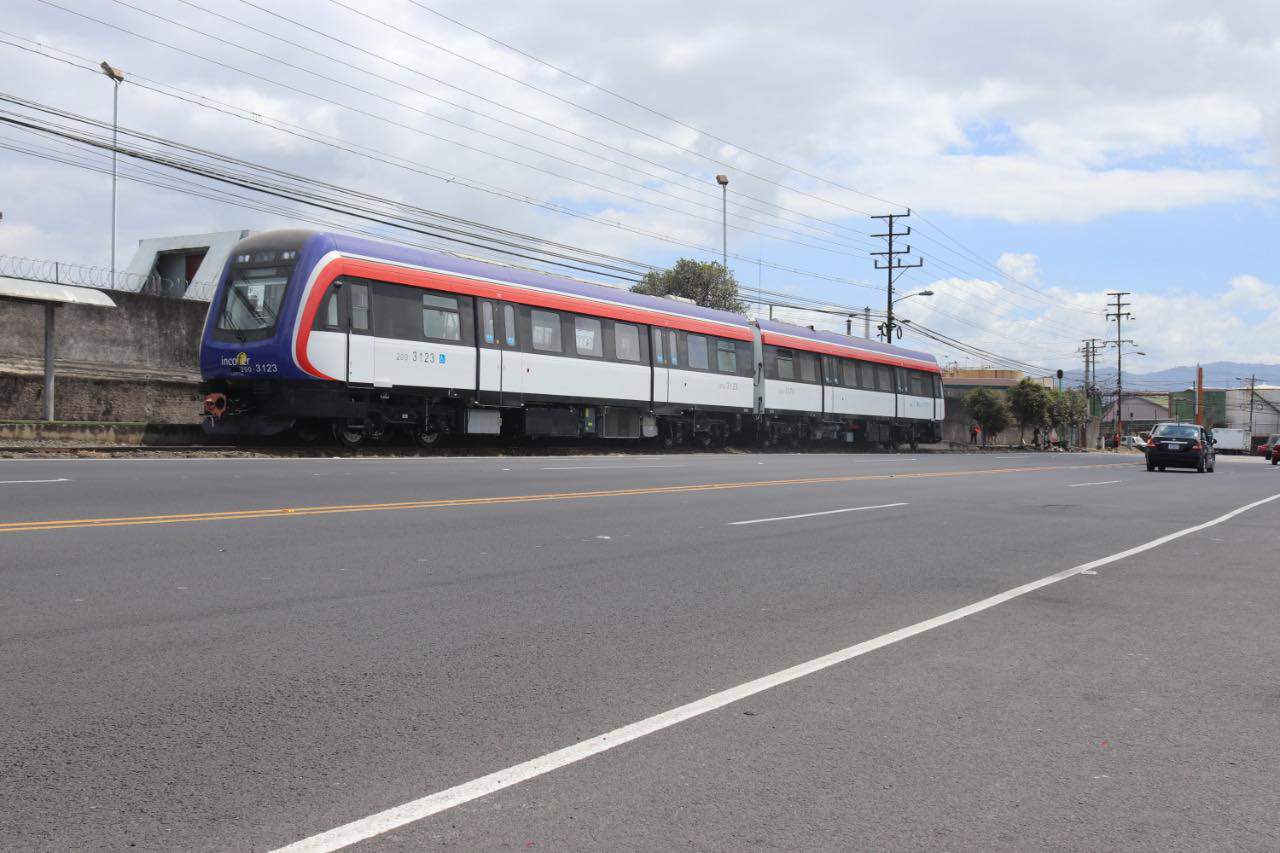Residents of the Greater Metropolitan Area will soon notice a new addition to Costa Rica’s public-transportation sector.
The Costa Rican Railway Institute (INCOFER) is ready to introduce the eight self-propelled diesel train carriages that it received in recent months.
“After a three-month process of training for driving personnel and testing the 8 new train units acquired from the company CRRC Quingdao Sifang Co, the equipment is ready for the start of gradual operation with passengers,” INCOFER said in a statement.
Each of the trains has a length of 38 m and a capacity for 372 passengers, double the capacity of the current railroad cars. On-board amenities include air conditioning, preferential seating for people with mobility issues, and wheelchair spaces.
The trains, purchased from the Chinese company CRRC Qingdao Sifang Co. f0r $32.7 million, pollute “90% less than current trains,” per the Presidency. The purchase price also includes workshop equipment, spare parts, training and after-sales support for three years.
“We are excited to see how railway modernization is moving steadily in our country with the implementation of this new equipment, which represent the largest purchase in the last 40 years of INCOFER and the first time in the history of our country that new self-propelled equipment for passengers has been acquired,” said Elizabeth Briceño, INCOFER president.
Costa Rica refocuses on its railroad
While these new trains are diesel, Costa Rica eventually plans to create an electric passenger train network as an integral piece of its decarbonization plan.
In 2020, the government presented its plans for the 84 km of railroad that would feature 46 stations across the heavily populated Greater Metropolitan Area. Once completed, the urban electric train would transport 200,000 people each day, linking the cities of Cartago, San José, Heredia and Alajuela.
“It will be the largest concession project in the country and will transform our nation in mobility, health and competitiveness,” President Carlos Alvarado said at the time.
A robust railroad evokes memories of Costa Rica’s past, when trains played an important role in the country’s development.
In 2019, the government began exploring the feasibility of the Limón Electric Freight Train Project, or TELCA, which would modernize stretches of rail between Limón and Río Frío, and between Limón and Valle de la Estrella, as well as explore the viability of a new stretch between Río Frío and Bajos de Chilamate.
INCOFER is also discussing rebuilding its rail network from the San José area to Puntarenas on the Pacific coast. That infrastructure has been in a state of disrepair after budget cuts and damage caused by the construction of Route 27.
“We are sure that this will contribute to the economic recovery of the area and will generate employment, and that it is also another step to return return to the rail legacy of our grandparents in Costa Rica,” Briceño has said.






